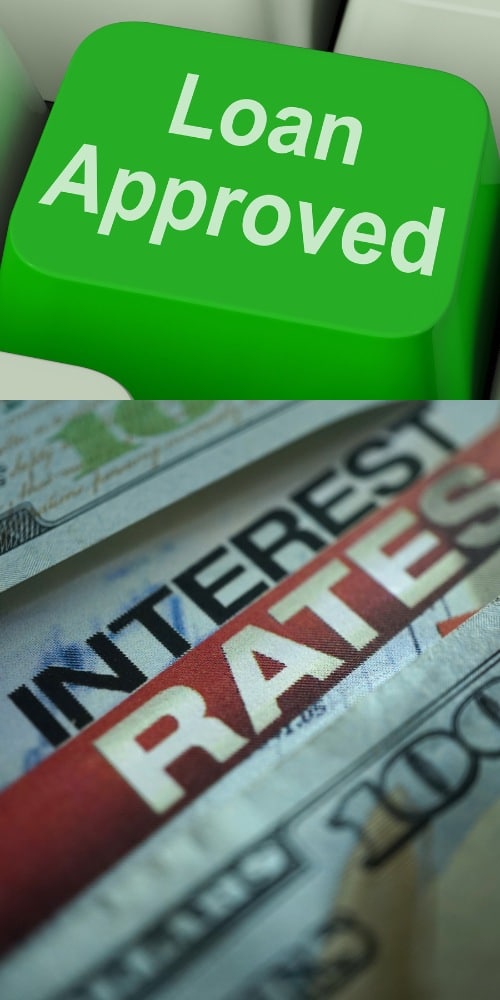Bridge loan financing can help you with your real estate investments in a convenient, no-fuss process. Talk to us today for a free, no-obligation assessment.

Key Takeaways:
- Bridge loans are short-term loans that provide immediate funding to bridge the gap between purchasing a new property and selling an existing property. These loans are typically used in real estate transactions to ensure smooth transitions and prevent delays.
- You may need a bridge loan when you are purchasing a new property but have not yet sold your existing one. Bridge loans can help cover the down payment or afford you the time needed to sell your current property.
- A bridge loan works by providing interim financing until a more permanent financing solution, such as a mortgage or sale of the existing property, can be obtained. The collateral of the existing property secures the loan and is typically repaid within a short period, typically 6 to 12 months.
- For example, let’s say you find your dream home before selling your current property. You can take out a bridge loan to cover the down payment on the new home while using the sale proceeds from your existing property to pay off the bridge loan. This allows you to secure the new property without needing to wait for the sale of your current home.
What Is A Bridge Loan?
A bridge loan is essentially a short-term loan that “bridges” the gap between selling one asset and purchasing another. Think of it as a financial stepping stone. These loans are usually backed by collateral like real estate and are commonly used in real estate transactions.
How Does It Work?
Imagine you’re selling your current home to buy a new one. The catch? Your new dream home is available now, but you haven’t sold your existing home yet. A bridge loan can help you secure your new home while waiting for your current one to sell.
Here’s the breakdown:
- Loan Approval: You apply for a bridge loan, and if approved, the lender will likely cover a significant portion of your new home’s cost.
- Simultaneous Transactions: You can now buy your new home while still trying to sell the old one.
- Repayment: Once your old home sells, you use the proceeds to pay off the bridge loan.
Pros and Cons
Pros:
- Speed: Quick to secure, helping you act fast in competitive markets.
- Flexibility: Some bridge loans allow you to skip a few initial payments.
- Convenience: You can buy a new home without having to sell your existing one first.
Cons:
- High-Interest Rates: Generally higher than traditional loans.
- Risk: If you can’t sell your old home in time, you might struggle with double mortgage payments.
- Fees: There can be hefty administration and processing fees.
Who Should Consider a Bridge Loan?
- Homebuyers in hot markets where properties sell quickly.
- Real Estate Investors who need quick capital for an opportunity.
- Businesses that need short-term capital before securing long-term financing.
Global Integrity Finance offers a convenient way to secure and expand your bridge loan real estate investment. You can apply for one and receive your loan in just a few days! Contact us and let our financial representatives assist you in this matter.

Benefits of Bridge Loan Financing
A bridge loan is ideal for any immediate real estate business needs. It lets you focus on renovation, upgrading, and restoration projects, which can be finished in a month or two.
You can use the following advantages through a bridge loan:
Easy and Fast to Apply
The application process for traditional loans tends to be longer if made through a bank. It may take several days to a couple of weeks before you get the approval. If you get a bridge loan with us, you can receive the amount after a few days and start your project as soon as possible.
Fast Approval
We base your application’s approval on the real estate’s value. While banks look into your credit score and debt-to-income levels, we do not make your credit history the deciding factor. Instead, we look into the investment property’s value, giving you a higher chance of fast approval.
Easy Repayment
A bridge loan does not require your monetary payment. You can repay it through the property once it is refinanced or sold without having to shell out your own money.
Competitive Interest Rates
Simple interest loans. All bridge loans are INTEREST ONLY. There are no hidden fees that come with the loan.
Looking for bridge loans for an investment property? At Global Integrity Finance, our bridge loans are the ideal solution for real estate financing when you need short-term funding for deals that need more time to build equity and appreciation.


Understanding Bridge Loans
These loans are also known as fix and flip loans, interim financing, swing loans, or gap financing. They provide investors with the money needed to restore an investment. They are usually built on 12-month terms or less.
You can acquire this loan in just a few days. Though they can be easier to obtain, they are similar to other property loans because they require some collateral. This collateral can be the expected value of the investment after its restoration.
Bridge loans are based on the amount borrowed from the value after the repair or on the ratio of loan to cost. This is just one of many ways to finance your investment properties.
How Bridge Financing Works
Bridge loans allow the investor to acquire a property or refinance an existing property under a short-term situation.
Doing this allows investors to either rehab and stabilize the property or provide a short-term solution while long-term financing is secured.
Real estate investors use bridge loans to build a portfolio for growing a business. This loan product enables them to be invested in more than one thing at a time.


A bridge loan for an investment property can assist borrowers in finding a new tenant, solidifying the property’s cash flow, and even fixing environmental issues in the property.
The loan gets paid back once the investment property is sold or refinanced.
Talk to us at Global Integrity Finance if you want to get the best bridging loans available in the market. As a top bridge loan lender, we offer a free assessment of your requirements so you can make the most out of your hard-earned money.
Bridge Loan Uses
The money you get from bridge loan investing can be used for different purposes. The possibilities are endless with bridge loans because it allows flexibility on how you want to spend the money.
Building Restoration
A borrower can restore an investment property such as an SFR, Mixed-Use, or Multifamily. You can upgrade appliances, counters, flooring, and more, allowing you to raise rental rates.
Property Leasing
In the case of an office building, you may lease the property and use the bridge loan to help tenants utilize their space.
Various Housing Investments
We lend for multiple different housing options. SFR (1-4 units), condos, multifamily and even mixed-use properties.
Strengthen Cash Flows
A bridge loan investment banking also works to solidify the cash flows of a property before refinancing it with more permanent debt.
Reasons To Get Bridge Loan Financing
Securing a bridge loan with Global Integrity Finance opens the door for you to expand your earnings while enjoying the benefits that come with the loan’s terms.
Are you looking for a bridge loan? Global Integrity Finance is here to help. We offer flexible, fast bridge loans that fit your budget and unique circumstances.

Understanding Bridge Loan Rates
When it comes to bridge loans, it’s crucial to understand that bridge loan rates are a different beast compared to other types of loans. These are specialized financial agreements that come with their own set of interest rates, which are often higher than those of traditional loans.
The rate for a bridge loan is primarily determined by the lender, which can vary significantly depending on several factors. For instance, if you opt for bridge financing from a traditional banking institution, you might find that the rates are somewhat standardized. However, if you choose to borrow from private money lenders or private equity firms, the bridge loan rates can be considerably different, often higher.
The terms and conditions of the bridge loan also fluctuate based on the lender. Just like the rates, the terms can be more rigid or flexible depending on whether you’re dealing with a bank, private money, or private equity. It’s essential to read the fine print and understand all the terms before signing any contract.
One of the key features that make bridge loans attractive to investors is their flexibility, often referred to as “wiggle room.” This flexibility allows borrowers to secure financing quickly, often for unique or time-sensitive opportunities. However, this very advantage also impacts the bridge loan rates you’ll be offered. The convenience and flexibility come at a cost, usually in the form of higher interest rates.
Compared to more permanent financing options like mortgages or long-term loans, bridge loans are short-term by nature. Because of this, they generally come with higher interest rates. Lenders are also typically less forgiving when it comes to late fees and other penalties, making it crucial for borrowers to pay close attention to the repayment schedule.

Bridge Loan Advantages
A bridge loan has several advantages. It is flexible and can be used for short-term needs, unlike traditional loans requiring fixed terms and higher rates.
Fast to arrange
You no longer need to wait weeks or even months to get your loan. As long as you send the correct documents, you can expect your bridge loan to be transferred to your account as quickly as 48 hours!
Flexible lending criteria
Your credit history and monthly income are not significant factors when you apply for a bridge loan. Unlike banks that scrutinize your credit history and make decisions based on these aspects, our lending criteria depend on the property’s value.
All types of property can be used as security
A bridge loan is flexible regarding the type of property you choose. Whether it is multifamily buildings, retail centers, commercial units, land, or leisure complexes, lenders are more lenient with what you will use the property for.
Multiple properties can be used as security
A finance facility can be open to one or more properties for security. It can follow a first or second-charge set-up. The lender can also accept a combination for both charge basis.
Multi-purpose loans
You can use your bridge loan for any purpose you intend to use it. Bridge loan financers will not specifically consider how you will use the borrowed amount. What they look into is your ability to pay the loan back through the value of the property.
Why Choose Global Integrity Finance Bridge Loan Financing for Investment Properties?
We are dedicated
We are a team of devoted financial advisors ready to assist you with your financial decisions. Taking on a loan does not have to be crucial and challenging. We’ll guide you in every step of the application process, making it a seamless and convenient experience.
We maximize your potential
As you entrust your real estate investment with us, we will ensure that you know your potential growth in increasing your real estate income. We’ll not only offer you funding options but also guide you in the next steps of your journey so you can maximize your earnings.
Quick response time
We understand that you may need further information about your bridge loan, or you may need more clarification about the terms. Our customer service representatives are ready to investigate your concerns and process your requests immediately.
We offer customized service
To help you plan your next move, we offer a no-obligation assessment of your financial needs. Explore more about what we can offer when you book a consultation with one of our finance experts.
BRIDGE LOAN FINANCING FAQ'S AND ANSWERS
We answered some of the most common questions we encountered regarding bridge loans.
1. What is a bridge loan?
A bridge loan is a short-term financing option designed to provide immediate funds to bridge a financial gap, typically between the purchase of a new property and the sale of an existing one.
2. How does a bridge loan work?
Bridge loans offer temporary funding to cover the down payment on a new property or to meet other immediate financial needs. The borrower’s existing property secures the loan, and the goal is to repay it once the property is sold.
3. What is the typical repayment period for a bridge loan?
Bridge loans usually have a short repayment period, typically ranging from a few months to a year. The loan is often repaid in a lump sum when the borrower’s existing property is sold.
4. What types of properties can be financed with a bridge loan?
Bridge loans can be used for various real estate types, including residential, commercial, and investment properties.
5. What are the interest rates for bridge loans?
Interest rates for bridge loans tend to be higher than traditional mortgage rates due to the short-term nature and higher risk. Rates can vary based on the lender, the borrower’s creditworthiness, and market conditions.
6. Can I get a bridge loan if my credit score is imperfect?
While credit scores are considered, some bridge lenders may focus more on the value of the property being used as collateral. However, having a stronger credit score can potentially lead to better loan terms.
7. Are there any upfront fees associated with bridge loans?
Yes, borrowers may encounter origination fees, appraisal fees, and other closing costs when obtaining a bridge loan.
8. Can bridge loans be used for purposes other than real estate?
While bridge loans are commonly associated with real estate, they can sometimes be used for other purposes, such as funding a business’s short-term needs during a transition.
9. What happens if I can’t sell my existing property within the bridge loan term?
If the borrower cannot sell the existing property within the agreed-upon term, they may need to seek an extension from the lender or explore other financing options to repay the bridge loan.
10. Are there alternatives to bridge loans for short-term financing?
Yes, alternatives include personal loans, lines of credit, home equity loans, and borrowing from family or friends. However, each option has its own benefits and risks.
11. Can I get a bridge loan from a traditional bank?
Some traditional banks offer bridge loans, but they may have stricter eligibility criteria and longer processing times than specialized bridge loan lenders.
12. How can I choose the right bridge loan lender?
It’s important to research and compare different bridge loan lenders, considering factors such as interest rates, fees, reputation, and customer reviews. Working with a reputable and experienced lender is key.
Contact Us Now
As an investor, if you are looking for an investment that is backed & secured by real estate, & protected by a great team with a proven track record. Investing with us, you will be able to see complete transparency on how we work with our clients & investors. Our investor portal will allow you to see how your money is working & growing, not just for yourself but others too.






